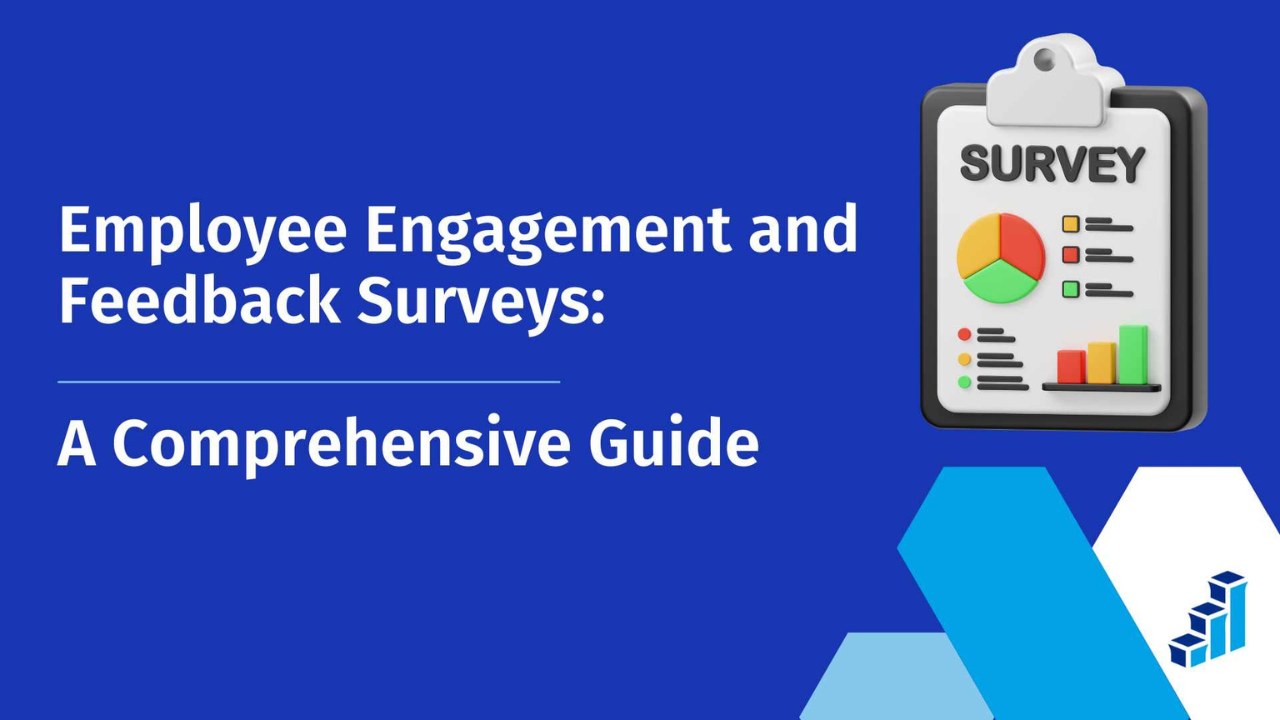
Employee Engagement and Feedback Surveys: A Comprehensive Guide
The employees are one of the key indicators of organizational performance. It demonstrates how attached and engrossed workers are with their work and the organization.
An organization that maintains engaged employees usually receives better levels of performance, higher levels of creativity, and even more loyalty, all of which boost the profitability of that particular firm.
So, how can one quantify and enhance the employees’ engagement level?
Leveraging opinion mining as a beneficial asset for businesses, they can obtain information about their employee’s experiences and satisfaction as potential issues.
As a result, the organizations can learn particulars that encourage or demotivate the employees to address the progressive deterioration of organizational culture.
Importance of Employee Engagement
Employees are often considered the heart and soul of any organization. Committed workers are enthusiastic, diligent, and purposeful, leading to positive business outcomes.
Many authors highlight the clear link between employee engagement and corporate performance.
Impact on Productivity and Performance
Engaged employees are not just workers but invested contributors who take pride in their work. Because of this increased passion and intensity towards the job, there is bound to be enhanced output and efficiency.
They consistently exceed expectations, producing nothing but quality work and always striving to develop new ideas to help solve problems.
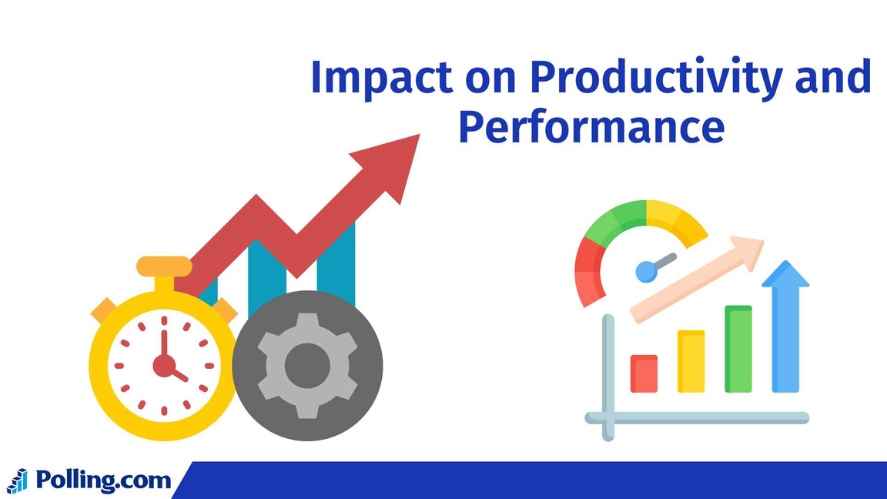
According to Gallup, companies with higher employee engagement rates experience a 21% increase in productivity compared to those with lower engagement levels.
Another Gallup study indicated that highly engaged teams generate 18% more sales and 23% higher profitability. Teams with high engagement also have 14% higher productivity and 43% lower turnover.
From such statistics and cases, one can see that engaging the employees in the organization impacts the business’s productivity and worth.
If the employees develop a sense of worth and drive and develop a company culture, they will be fully engaged and more willing to contribute towards achieving corporate objectives.
Employee Retention and Satisfaction
Employee engagement is one of the most essential elements in maintaining organizational stability and creating a positive organizational climate based on employees’ satisfaction at the workplace.
When employees’ needs for meaningful work and organizational relationships are met, they will not seek employment elsewhere.
This cuts down the turnover rates, denying firms the outrageous costs of recruiting and training new employees.
Engaged employees are happier at work. They feel more purposeful, valued, and practical and receive more morale and enhanced quality of existence.
This forms a virtuous cycle, as contented employees are productive, meaning that they will also be more engaged in their work and then improve the contribution they offer a company.
On the other hand, employees with low levels of engagement can be a nuisance to the company’s resources and energy. Workers may also be less effective, more inclined to take sick days, and more likely to turn over the company.
This can result in a reduction of the rate of work output, high expenses, or fines due to violation of rules and regulations and adverse conditions of work productivity.
Understanding Feedback Surveys
Surveys are incredibly effective channels for obtaining information regarding employee engagement.
They allow employees to engage in conversation and express what they want, their feelings, and what they observe.
Types of Employee Engagement Surveys
The engagement surveys are of different types that companies use for various aspects.
Pulse surveys are brief and administered more than once, offering detailed data on how the employees feel and how engaged they are at any one time. Thus enabling organizations to take specific action in case of a change.
An annual engagement survey is a survey that is given at least once per year. It’s used to assess employee engagement in an organization and to get a general view of the climate in the organization.
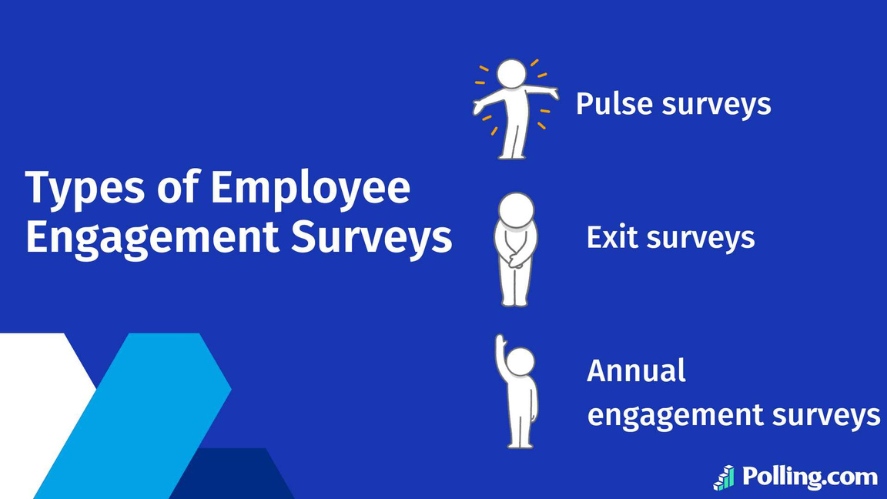
Other exit surveys commonly assess employees’ views and disposition towards their employer, company, or organizational unit.
This includes the exit interview, where a former employee is given a set of survey questions to fill in regarding his reason for quitting, level of satisfaction, and potential suggestions.
Such information can assist in identifying and searching for the patterns that need to be eradicated to prevent turnover reasons.
Each type of engagement survey has its strengths and weaknesses, and the best strategy usually implies using several survey types to collect an extensive array of feedback.
Designing Effective Employee Engagement Surveys
Creating engagement company surveys needs to be well-planned and well-thought-out to be effective.
When planning for the survey, you must identify the survey objectives. Thus, a clear outline of the surveys’ aims and components needs to be provided.
This will help you tailor the questions effectively, considering the length and frequency of the engagement surveys to maximize response rates.
Furthermore, the combination of closed and open questions helps to receive qualitative and quantitative results. It gives a better understanding of the overall picture of employees’ attitudes.
Simultaneously, it is necessary not to dominate and to use simple language without telling what kind of answer you expect.
So as not to discourage employees from being as truthful as possible, tell them that your survey is anonymous and that their identity will not be known to anyone.
Finally, clarifications on the aim of the engagement surveys, the use of the data collected, and the measures to be taken after the surveys must be made clear.
This creates employee confidence and shows the management’s willingness to address issues raised.
Employee Engagement Survey Providers: Conducting Feedback Surveys
Effectively distributing and collecting employee feedback surveys is crucial for maximizing participation rates and gathering valuable data.
Many employee engagement survey providers offer various methods to help organizations collect feedback efficiently, each with advantages and drawbacks tailored to specific needs.
Survey Distribution and Collection Methods
The ideal method for distributing and collecting job engagement surveys will vary depending on your organization’s needs and resources.
Through popular tools offered by employee engagement survey providers such as PollingBlog, SurveyMonkey, and Google Forms, convenience, efficiency, and optimized sample sizes. These platforms provide attractive templates, self-generated responses, and easy-to-generate reports.
However, paper surveys are another option. It may suit employees unfamiliar with online forms or who need access to such facilities.
However, data entry becomes problematic, and printed employee survey questionnaires cannot be used for extensive surveys.
On the other hand, face-to-face interviews are personal and encourage elaborate inquiries and clarifications. However, they require time and might not be appropriate for large organizations.
Lastly, the method’s selection is influenced by dimensions like the size of the company, available resources, technological environment, and user base.
Thus, to make the information more accessible and respond to different audiences’ needs, it is possibly more efficient to employ several strategies.
Encouraging Participation
To encourage people to participate in engagement surveys, the degree of trust established in an organization has to be high. However, this foundation can be advanced by the following strategies to a great extent.
For instance, providing employees or consumers small gifts for their participation in the survey. Of course, with a promise of their identity and anonymity, employees can express themselves freely and provide candid opinions.
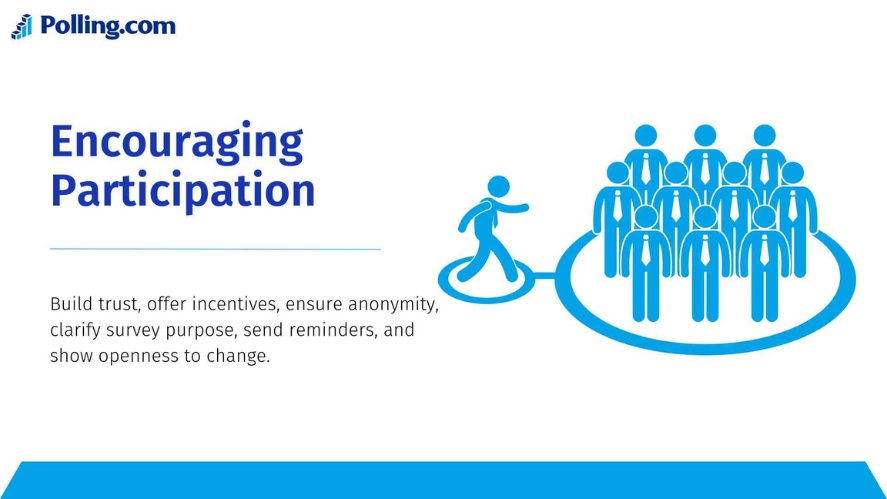
However, to encourage employees to participate in the work engagement surveys, clients should ensure that they disclaim uncertainty about the surveys and the utilization of results.
Finally, embark on a campaign that portrays the company’s willingness to embrace change sourced from the feedback received.
When these approaches are combined with proper distribution and collection processes, firms can obtain rich and valuable insight from employee feedback and potentially produce significant organizational change.
Analyzing Survey Data
Analyzing and interpreting survey data is where the real value lies.
It’s about transforming raw data into actionable insights that can drive positive change.
Interpreting Results
The first step is to review the staff engagement survey responses carefully. You need to identify the findings that might create patterns, trends, or anything that can be repeated systematically.
What domain or area of the company do the workers have fuller satisfaction or dissatisfaction? Are there any improvements that are alike in both studies? etc.
For example, benchmarking is a valuable tool when you want to compare the effectiveness of your actions with others or your previous performance.
This way, you can point out areas of company strengths and weaknesses.
Turning Feedback into Action
Once you understand the survey results, it’s time to take action.
Here’s a step-by-step guide:
- Prioritize Areas for Improvement: Identify the areas that have the most significant impact on employee engagement and focus your efforts there.
- Develop Action Plans: Formulate goals that are specific, measurable, attainable, relevant, and time-bound to tackle the identified problems.
- Communicate Results and Plans: Share the survey results with employees and outline the action plans that will be implemented. This transparency builds trust and demonstrates the company’s commitment to acting on feedback.
- Implement Changes: Implement the action plans and consistently monitor progress.
- Monitor and Evaluate: Continuously monitor employee engagement levels and evaluate the effectiveness of the implemented changes.
Leadership plays a crucial role in driving engagement initiatives. Management should actively participate in the process, support the changes, and communicate openly with employees.
By working together, companies can create a more engaged and productive workforce.
Best Practices and Case Studies
Real-world examples and lessons learned offer valuable insights for companies seeking to enhance employee engagement.
Organizations can develop effective strategies tailored to their unique needs by studying successful programs and understanding common challenges.
Inspiring Employee Engagement Programs
In principle, there is a multitude of organizations that support enthusiastic employees and relevant, attractive projects.
For example, one of the biggest hi-tech companies launched an extensive program to increase staff recognition and motivation.
By recognizing the achievements of individuals and teams, they realized they had a higher morale and productivity rate.
This company also established giving and receiving feedback rituals, making employees feel appreciated.
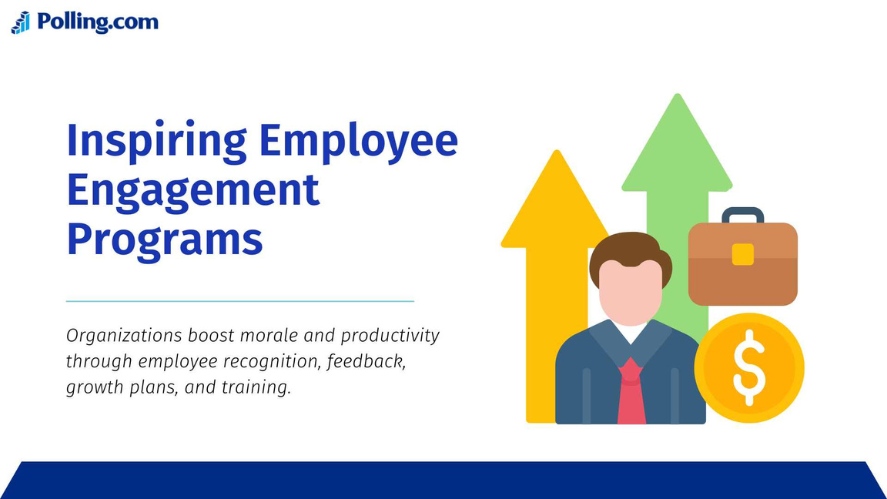
A healthcare organization values growth plans concerning its personnel’s professional experience in different industries. The interventions included training schemes, coaching plans, and promotional opportunities.
It is evident that training its employees not only increased the levels of employee engagement but also contributed to improving the quality of services that the patients received.
Navigating Challenges in Employee Engagement
Maintaining high employee engagement is challenging, and implementing a successful associate engagement survey is difficult.
Survey fatigue, where employees become disengaged due to frequent or overly complex surveys.
This can be solved by reducing the number or frequency of surveys and changing the format of the recurrent questions and for-surveys, making them only focus on feedback that will be acted upon.
Also, follow-up measures whereby feedback is implemented are essential because they will enhance trust and engagement.
This can be obtained by defining the communication links and embracing the employees through consultation and substantiation.
Finally, the foundation and ongoing process focused on feedback, interpersonal communication, and employee engagement and training to maintain a high engagement level are essential.
Conclusion
Based on the analysis results, it could be advisable to conclude that establishing employee engagement is one of the most significant building blocks of a thriving organizational culture.
Realization of employee feedback is an efficient way of increasing productivity and performance as well as increasing the rate of employee retention.
It is necessary to state that some difficulties are still present.
However, these difficulties can be eliminated through the proper approach to creating and programming engagement surveys and clear communication with the participants and employees willing to improve the current situation.
Everything done to engage employees can be considered an investment for the successful future of your organization.
